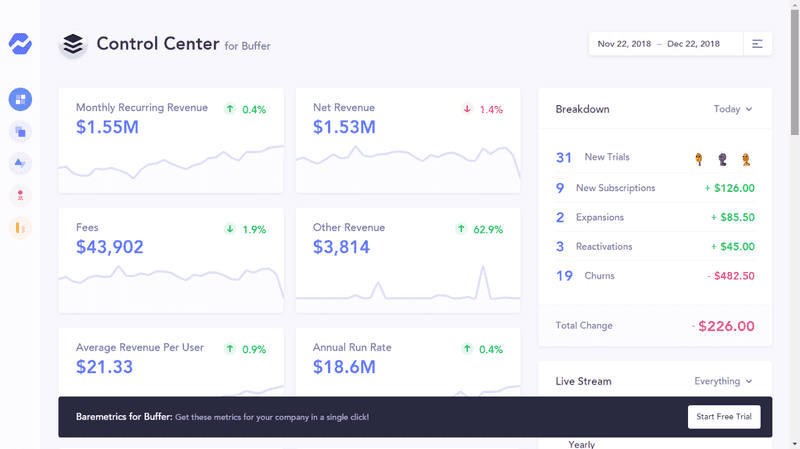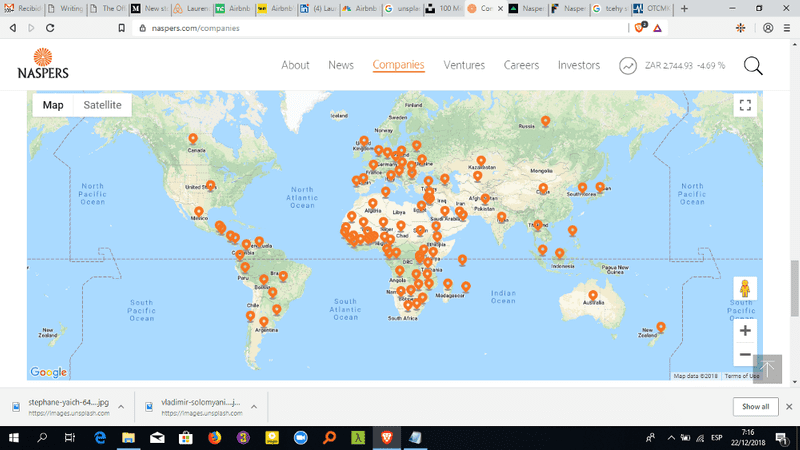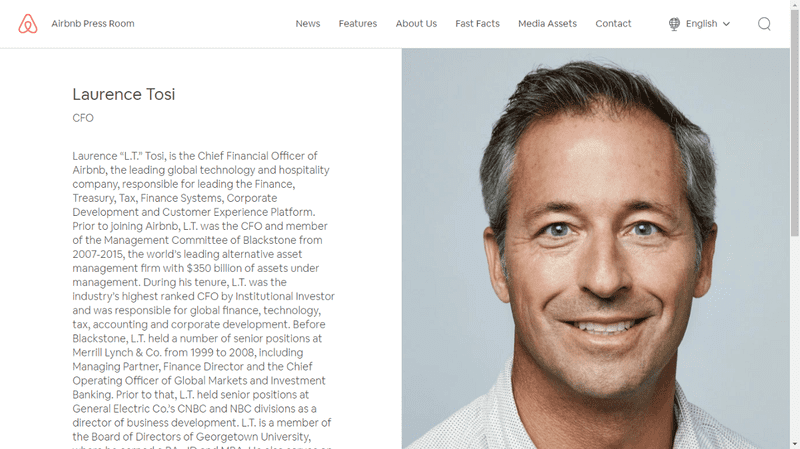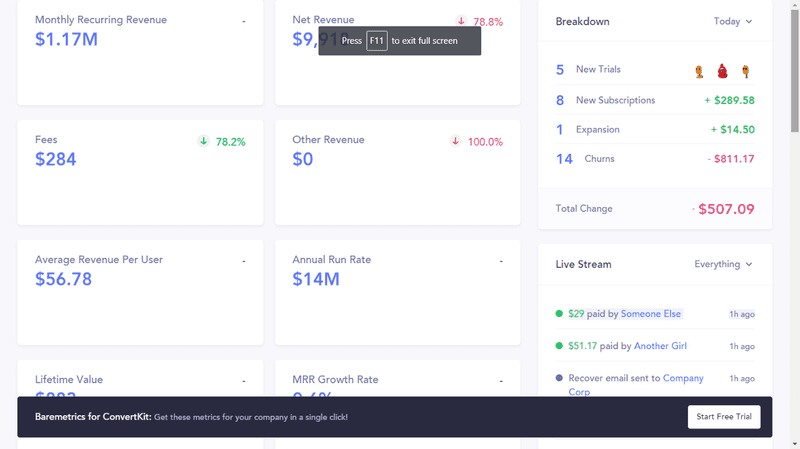Why Every Company (Big or Small) Needs an “Internal Investment Fund”
The Panda Way to Build a $100 Million Profitable Company
One of the most fascinating stories about Airbnb in 2018 was about the quick notes explaining how Laurence Tosi (his former CFO) created an internal “hedge fund” in the company, generating $5 Million USD per month:
Olivia Zaleski (Bloomberg) made an incredible work explaining all this:
The addition of Tosi in 2015 was a signal for Wall Street to pay attention to the company. He was eager to create new, cash-generating ventures at Airbnb, people familiar with his work said. He quietly built a hedge fund within the company’s finance department. He used a portion of capital from the balance sheet to buy stocks, currencies and fixed-income securities, mimicking the treasury fund he ran at Blackstone. The side project represented 30 percent of the company’s cash flow last year and made about $5 million a month for Airbnb, the people said.
Unfortunately, Tosi resigned as the CFO of the company in February of this year. But let´s concentrate on the idea he built: an internal hedge fund generating a good chunk of cash (30% of the company´s cash flow) every month.
I love this terrific idea. Why? There are many reasons why, but I will discuss my favorite ones in this post.
Let´s start with the terrifying number: 9 of 10 startups fails out there
Yes, it´s totally true. 90% of startups flops. The causes are many, and there a lot of articles explaining those possible causes, and even how to avoid them, or how to prepare better to run your business.
One of the key insights about how to grow your business, is to find new ways to increase your cash flow every month, and surprisingly; this could be inside your own business. Let´s discuss several of these ways.
Work in new ways to acquire new customers
One of the most expensive things to do in business today, so you have to figure out how to keep a healthy balance between your LTV and CAC.
Great example? When Square Cash app added the possibility to buy and sell Bitcoins inside the app. In Q3 2018, the results were astonishing for Square:
We deduct bitcoin costs because we consider our role in the bitcoin transactions to be facilitating customer access to bitcoin. Since we only apply a small margin to the market cost of bitcoin when we sell bitcoin to customers, and we have no control over the cost of bitcoin in the market, which tends to be volatile, we believe deducting bitcoin costs is a better reflection of the economic benefits as well as the Company’s performance from the bitcoin transactions.
Create new complementary products for your existing customers
If you already have them, why not keep them expending more money in your sales page? If you have what to do, just ask them. Your customers could give two or three things to implement, which could be a new profit vehicle.
Great example? Just read these two post from Yevgeniy Brikman, CEO at Gruntwork about how they got $1 Million in Annual Recurring Revenue and how they built a profitable company from day one, focused on their existing customers:
Despite this, the company has been profitable and we’ve been able to pay competitive salaries from day one. How’s that possible? Well, every single thing we’ve built at Gruntwork has been paid for by a customer that wanted that thing — and we got them to sign the check before we built it.
Play with a new pricing strategy focused on a discount if your client pays you for an entire year
Win — Win strategy for both of you. This post about pricing strategies for SaaS from Tom Tunguz is simply a gold mine.
Work hard to decrease your user churn
One of the most effective ways to increase your cash flow with existing customers. Josh Pigford and his crew at Baremetrics have amazing resources about how to combat user churn:
- 3 things we did to reduce churn by 68%
- 13 actionable tips for reducing churn & retaining customers
- Double Your Customer Value: 7 Ways to Reduce SaaS Churn
Using Affiliate marketing as a brand and get paid for it
I don´t understand yet why many companies out there are not using this in 2018. Affiliate marketing could be just a quick simple to increase your revenue every month.
Just think about this for a moment: The average startup uses more than 12 different products to be more productive; and guess what? Many of the same products you are using; they could have an affiliate program.
Why not take advantage of that and make a specific page in your website about tools you use? Just to give three examples: Zoom, Convertkit and Shopify.
In the case of Zoom, they can give cash for every referral you send to them.
In the case of Shopify, they have two options: $58 for every customer who sign up for a paid plan, and and $2000 for each Plus referral. Just these two products could give to startups a lot of money every year, just making a simple page with all the products they use.
And Convertkit has one of the most incredible affiliate programs out there:
The ConvertKit Affiliate Program pays out a 30% monthly recurring commission, for everyone you send us. If you send us an account with 8,000 subscribers ($99/month), we’ll pay you $30 every month. The best part? As their account grows, so does your commission.
Just make a quick calculation here: Let´s say your team has built an incredible product, built a blog with 180,000 visits every month. You has built a deep trust with your readers and customers, and a member of your marketing team: writes a monster blog about the tools and resources who make you more productive.
Let´s say you are a fully remote distributed team and you use Zoom for your meetings; your marketing team are big users and fans of ConvertKit and finally, you built a store with Shopify.
Let´s say that just 250 customers, sign up for Convertkit in the first three months of the post, another 450 became in Zoom referrals, and 280 more built a new store using your Shopify affiliate link.
To use a reference, let´s say Zoom pays $20 USD for every referral:
- 250 x $30 USD = $7,500
- 450 x $20 = $9,000
- 280 x $58 = $16,240
- Total = $32,740
$32,740 for three hours of work in a blog post and in a resources/tools page. Nothing bad, right? Now, just take in account that Convertkit will pay you $7,500 if those 250 people keep using the platform every month. In just 12 months, you could earn $90,000 USD for this.
This was made only with three products. Just imagine how much you could earn every month with more products.
Failure is present every day, everywhere
But, there is one problem here: you have all your eggs in one basket: Your own business.
Just consider this quick idea: What happens if your business fails? What happens if something happens and you lose 50% of your customers in one day? It could happen.
So, the main idea behind this post is simple:
Diversify your cash flow generation, using 10% of your Free Cash Flow to find good investments; especially those focused on income.
There is an important distinction here: Free Cash Flow. You have to build a profitable business from day one.
It could be done:
-
Jason Fried and his crew at Basecamp did it. Even, they created a page on his website featuring other businesses who has done the same thing
-
Mailchimp did it, and now it´s a $400 Million business
-
Joseph Flaherty (Founder Collective) wrote an incredible post on Hackernoon about 50 companies who started with little or not money.
So, just there, you have 50 good models to follow. What they have in common? They are extremely financial disciplined, and you have to learn how to do that from day one.
In the short months that Tosi was the CFO at Airbnb; he was instrumental to get in shape Airbnb´s finances. It doesn´t matter if he is out of the business right now. They know that.
So, it´s important to remember you this again:
- First, create a profitable business from day one (the toughest job ever but not impossible)
- Second: Take 10% of your Free Cash Flow every month or every quarter or every year, and invest it in income generating assets
One of the my favorite quotes about business is:
If you generate enough cash every month, and you invested all in your business, you are not growing…
It doesn´t matters your industry, your market, your business model: in order to keep your company alive; you need to generate more cash every month, a bigger number than your expenses. Simple as that.
As Mark Cuban said in a recent series of videos made by Amazon: Sell, sell, sell:
Sales cures all. If you’re going to be a successful company, you can’t just talk about your great idea. You have to actually sell something. There’s never been a company that has ever succeeded without sales.
Anybody who’s ever told you, “Don’t worry about sales, you can grow and then worry about sales later” — they’re lying to you. They will fail. You will fail. Do you know who the biggest salesperson in your company has to be? You.
So, let´s discuss the other way to build a $100 Million Business
One of my favorite articles of all times is the classic post written by Christoph Janz (Managing Partner at Point Nine Capital) called Five Ways to Build a $100 Million Business.
In the post, Christoph explained brilliantly his methodology using an analogy to animals how to build this kind of business; so I will make an analogy too: this is the “Panda Way to build a $100 Million company.
The little panda in your business will be the cash you generate every year of your 10% of your FCF invested. This panda will be a baby first, but he eventually will eat more bamboo every year, will grow to a big Kun Fu Panda, ready to kick you in the ass and save you from future mistakes or a market downhill.
The key of the question: How to do this?
These are the exact steps to accomplish this:
- Create a holding company and incorporate it in Cayman Islands. This would be helpful for investments, global expansion and future tax purposes
- Take 30% of your FCF every month and move it to the holding company
- Create several funds focused on key assets types: one fund for Real-State Investments (REITs, eREITs, Opportunity Zones investments), other fund for Income investing (dividend growth stocks with a steady dividend yield and income funds mainly), growth investing (high growth stocks), other fund focused on Private Equity, and a cash reserve for future investments
- Rebalance your portfolio every year and the most important part: keep investing in rich cash-flow assets
There are two strategies to consider here:
- If you need cash every month, you could take all the generated cash and make it available for your business every month. But if you do this, you can´t take advantage of compound interest
- A smarter strategy could be: 50% of the cash for the operations of the company, and the other 50% to keep investing every year. If you keep investing for the long term, your startup eventually will increase your cash reserves every month; and if you do it right now; you could grow to a $1 Million, $10 Million, 50 Million and finally the golden $100 Million mark.
Two quick examples that could be perfect for this little experiment: Buffer and Convertkit
These are two of my favorite companies out there for so many reasons:
- Both are profitable operations, and one of them bootstrapped
- Both are open startups with an incredible level of transparency
- Both are extremely careful with their finances
- Both generate more than $1 Million in MRR, which could be perfect for this
Let´s start with Buffer
The company generates $1.55 Million MRR and has an ARR of $18.4 Million:

To begin with the experiment, let´s take 10% of the ARR to create the internal fund: ` 10% of $18.4 Million = $1,840,000 USD
` To make a calculation quickly, just taking the whole money and invest it using the ideas behind Contrarian Outlook 8% Not Withdrawal Portfolio Strategy(https://contrarianoutlook.com/new-no-withdrawal-portfolio/CTA121218BO) .
This means that for every million invested, you will obtain $80,000 USD every year. Let´s make the calculation:
$1,000,000 / $80,000 = 12.5
So, for Buffer´s 10%, the calculations are:
$1,840,000 / 12.5 = $147,200
This means every year, Buffer could take $147,200 (before taxes) to split 50% for the business and 50% to keep investing = $73,600 each.
Now, let´s make the calculations for the next 5 years using this strategy and the power of compound interest:
- Year 1: $1.840.000 invested, final profit $147.200, $73.600 to be invested. The final capital in assets would be $1.913.600
- Year 2: $1.913.600 invested, final profit of the year $153.088, $76.544 to keep investing. Final capital: $1.990.144
- Year 3: $1.990.144, final profit of the year $159.211,52, $79.605,76 to keep investing. Final capital: $2.069.749,76
- Year 4: $2.069.749,76, final profit of the year $165.579,9808, $82.789,9904 to keep investing. Final capital: $2.152.539,7504.
Keep in mind I didn´t count the trading fees; and I made the calculations with just the initial 10% of the FCF of the first year.
If Buffer keep investing the 10% of FCF to this internal fund, and diversifying to several assets types; this could generate a significant amount of money in the long run.
Now, it’s Convertkit’s turn
ConvertKit is a different beast for one main reason: They make profits distribution around the company. So, the available percentage to make an internal investment fund is significantly less than Buffer. You can read the entire post about Profit sharing at ConvertKit by Nathan Barry here.
To make it simple, I just will take $1 Million to make the calculations, but in this case, I will take 70% to keep investing and 30% for the company bank account. From Year 1 to Year 5, the final capital would be: $1.243.528,30. This just with $1 Million. If they make a contribution of one additional million every year, this could grow exponentially.
Now, what about big companies? This strategy could be applied to any kind of company, but if you have more than $10 to $50 Million to put them to work for you, even better.
And the little ones? For companies in the range of $250.000 to $750.000 in MRR, it could be a little more difficult; but my advice is simple: you should do it anyway; or you can simply wait to reach $1 Million in MRR and run from there. The idea is start early as possible, and keep investing in the long run.
If you need a target to measure your success, here´s an idea: If you work hard in the next years, and your ARR is split: 50% of the cash from your own business and the other 50% came from investments; your team and you are the kings of the street.
Two Role Models to Follow: Berkshire Hathaway and Naspers
I want to finish with these two role models to follow. The first one is very well known: it´s the conglomerate founded by Warren Buffet and Charlie Munger. They started as a small company as well, and grew steadily to the incredible monster they are today.
If you are asking how, they used the “Value Investing” strategy, kept acquiring cash generating businesses and buying dividends stocks for the long run; and the strategy has paid off. Just give a deep look to the Berkshire Hathaway financial statements and you will see the big payout they obtained the last quarter from their investees.
The second one; Naspers, used a similar approach when they invested $32 Million in Tencent Holdings in 2001 for a 33% stake in the company. Today, they have a 31.2% stake, which equals to $113,4 Billion (December 22th, 2018). Nothing bad for a long-term investment right?
Now, they have investments disseminated for the whole world:

Conclusions
They are multiples ways to increase your revenue in 2019, and I just gave two main ideas how to do it. Now, it´s time to learn from these giants, and elevate your Panda game today.
It´s time to take action.
Thanks for reading, and let me know how I could help you to build your investment fund.


